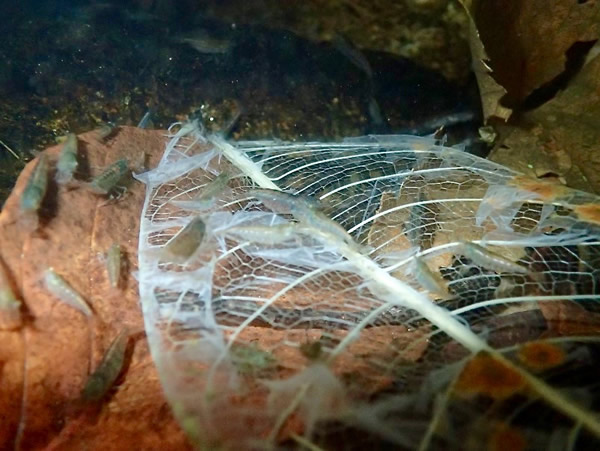News Article
April 5, 2017
What Climate Change Means for Leaf Litter

University of Utah and iUTAH researcher Jennifer J. Follstad Shah has been in the news for her contributions to research on leaf litter breakdown in streams and rivers, conducted in collaboration with a team of 15 scientists in the U.S. and Europe. The study “Global synthesis of the temperature sensitivity of leaf litter breakdown in streams and rivers” was published Feb. 28 in Global Change Biology.
An excerpt from the Phy.org story said “carbon dioxide coming from some of Earth's tiniest residents may not be increasing as quickly as some believed in the face of global climate change. Streams and rivers are home to insects, bacteria and fungi that consume plant litter, including fallen leaves, and break it into smaller pieces. This type of litter is good for streams and rivers because it helps remove toxins. As leaf litter is consumed, insects and microbes get oxygen, convert nutrients into energy and release carbon dioxide into the atmosphere. This process is what scientists call leaf litter decay.”
“The process is not as obvious as the melting of ice caps and impacts on a charismatic creature like the polar bear, but it is an important indicator of global climate change,“ Follstad Shah said, and one that has implications for values used in climate change models. “There is still a lot about the carbon cycle we don’t understand,” she said. “Understanding the temperature sensitivity of ecosystem processes that govern carbon cycling is imperative as global temperatures rise.”
Jennifer is currently working with data samples from seven iUTAH GAMUT sites along the Logan, Red Butte, and Provo rivers. While the data in this study does not come from the GAMUT sites, she says that it does relate since the results from both studies can be used towards developing indicators of stream health. Data and analysis from her GAMUT site studies will be available later this year.
Led by the Follstad Shah, the full study is available here.
Press: PHYS.ORG | Science Daily | UU News | Youth Health Magazine

« Back to list of all news articles


